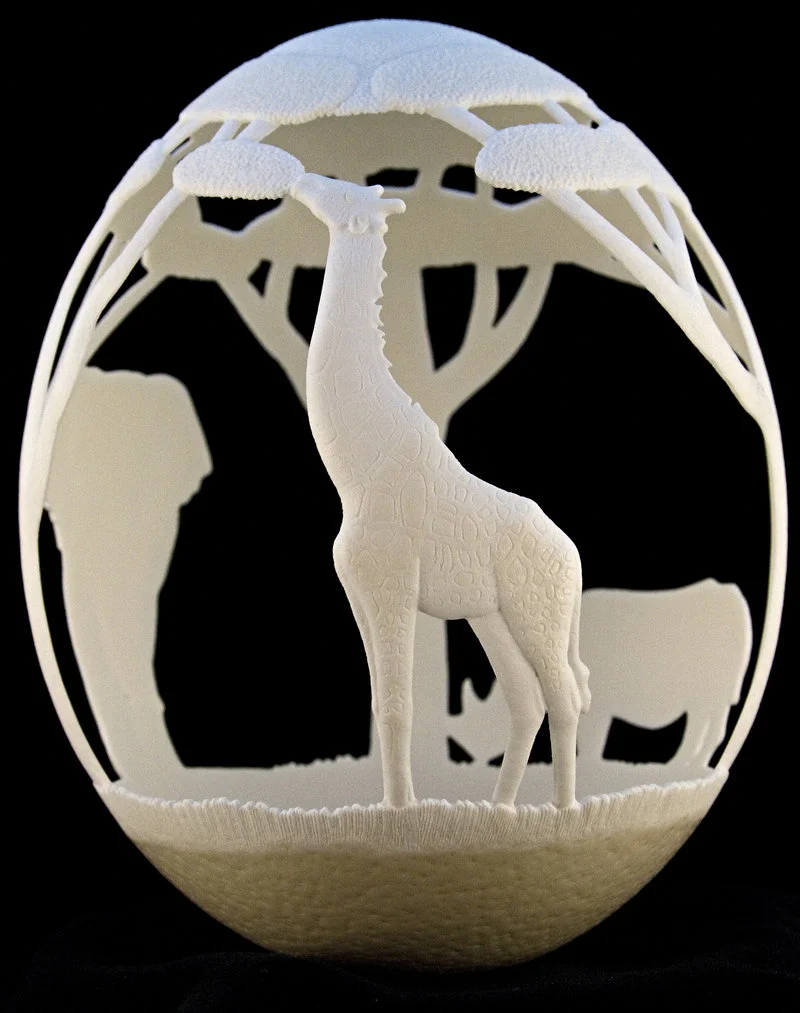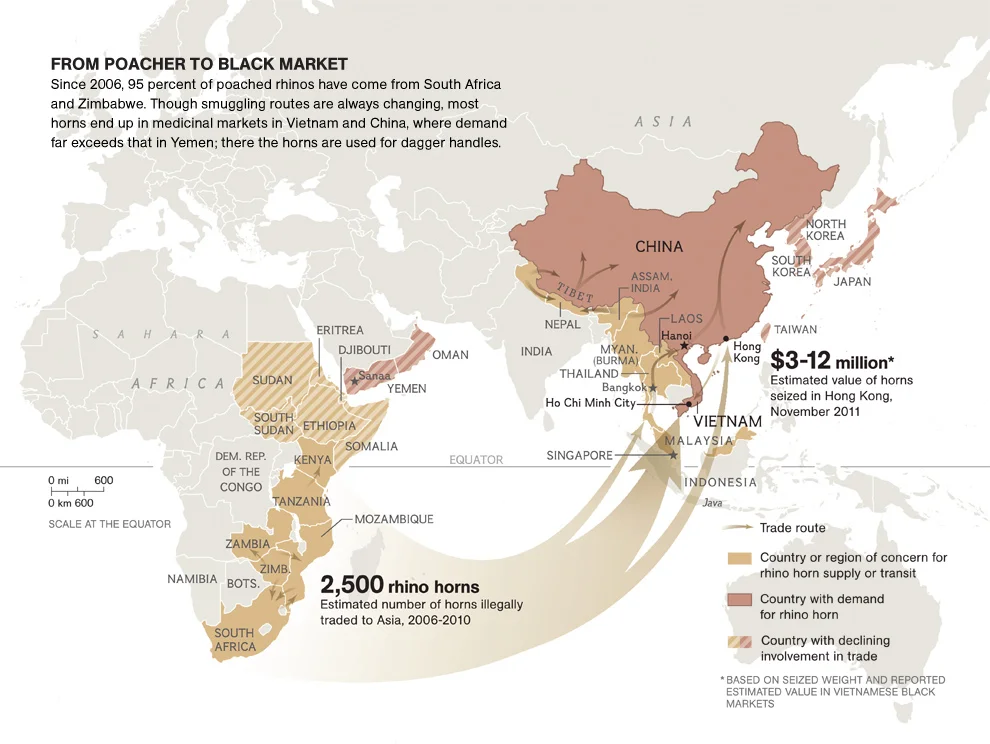Eggdoodler's 'Africa' Egg Sculptures Inspire Talk On Rhino, Giraffe & Elephant Extinction
/Deviant Artist eggdoodler carves incredible sculptures out of delicate egg shells. In this series entitled ‘Africa’, eggdoodler uses large ostrich eggs to sculpt an elephant, a giraffe and a rhinoceros. To achieve this incredible detail and removal of so much shell, the artist used a NSK Presto hand piece with diamond and carbide bits. About 1,000 hours of labor is required to sculpt these magnificent eggs.
AOC is devoted to elephant preservation in Africa and we have written extensively on saving the elephants. We know much less about rhinos and giraffes.
Rhino Conservation Worldwide
The Southern white rhino was once on the brink of extinction with only about 50 left in the wild. Today there are over 20,400 white rhinos in South Africa but only six Northern white rhinos remain, reports SavetheRhino.org.
At the beginning of the 20th century there were 500,000 rhinos across Africa and Asia. This fell to 70,000 by 1970 and further to just 29,000 in the wild today. Despite this bleak picture, and the continuing threat of poaching for their valuable horns, global rhino population figures have been increasing in recent years.
Large-scale poaching of the now critically endangered black rhino resulted in a dramatic 96% decline from 65,000 individuals in 1970 to just 2,300 in 1993. Thanks to the persistent efforts of conservation programmes across Africa black rhino numbers have risen since the early 1990s to a current population of 5,055.
The world cannot relax, however, believing that rhinos are not at risk in South Africa. The dramatic rise in poaching since 2008 in South Africa could derail the positive increases in rhino populations in that country. National Geographic reports that 1000 rhinos were poached in 2013, the higest in modern history. This slaughter represented a 50% increase over 2012.
Conservation efforts to save the Northern White rhino suffered a major setback with the October 17 death of Suni, one of only two breeding males left of his kind. Suni died in his enclosure at Kenya’s Ol Pejeta Conservancy and it’s believed that he died of natural causes. Autopsy reports are not yet availble.
As the map explains, the rhino populations in Asia are critically endangered and living on the brink of extinction.
Rhino Demand in China and Vietnam
China leads the demand for illegal ivory worldwide, with America following in second place in a 2008 study. In the case of rhino poaching, smugglers are sending rhino horns to medicinal markets in China and Vietnam.
Rhino horn continues to be coveted by Muslim men in Yemen and Oman, where they are used for the handles of curved daggers called ‘jambiya’. The daggers were traditionally presented to Yemeni boys as a right of passage at age 12-14. Rhino imports were banned in Yemen in 1982 and are in decline as seen in the demand map above.
PBS writes that contrary to popular belief, rhino horns are not in high demand as an aphrodisiac.
Far more pervasive, however, is their use in the traditional medicine systems of many Asian countries, from Malaysia and South Korea to India and China, to cure a variety of ailments. In Traditional Chinese Medicine, the horn, which is shaved or ground into a powder and dissolved in boiling water, is used to treat fever, rheumatism, gout, and other disorders. According to the 16th century Chinese pharmacist Li Shi Chen, the horn could also cure snakebites, hallucinations, typhoid, headaches, carbuncles, vomiting, food poisoning, and “devil possession.” (However, it is not, as commonly believed, prescribed as an aphrodisiac).
Giraffe Conservation Worldwide
Unlike elephants and rhinos, giraffes are not implicated in human-wildlife conflicts. National Geographic writes that there are no major conservation groups rallying to save giraffes and their decline goes largely unnoticed, even though giraffe experts estimate that their global population has declined by 40% in the last decade due to deforestation, converting giraffe habitats to agriculture and bushmeat poaching.
A new technology to track giraffes is surely employed with other animals as well.
Wild Nature Institute and its partner Dartmouth College are the first team to study the population trends of this spectacular ungulate species in the Tarangire Ecosystem, which hosts the second-highest density of giraffe after the Serengeti. According to Monica Bond of the Wild Nature Institute.digital photography and pattern-recognition software identify and track individuals throughout their lives and are excellent, modern, noninvasive tools for studying populations of giraffe. Giraffe pelage patterns are unique to each individual and remain the same from birth to adulthood. “This relatively new methodology is ideal because we can track many hundreds of giraffe without having to physically capture the animals, which is both traumatic and expensive,” said Ms. Bond.
Returning to the original stimulus for this post — these intricate and gorgeous ostrich egg sculptures by eggdoodler — I’ve learned this morning that in the case of ivory, the global demand isn’t only for jewelry. Scrimshaw objects are a huge part of the demand for ivory worldwide and in America. We will investigate this topic in a separate article. ~ Anne








